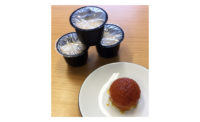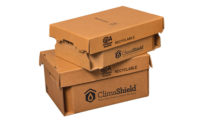Reclosable packaging is in a period of rapid growth, as many manufacturers realize the added value reclosable features offer consumers. This is especially true in the food industry, where a push toward reclosability has led to the implementation of a number of re-seal technologies, such as traditional zip locks, slider locks, reusable adhesives and even Velcro-like closures. Packages constructed from pre-applied zipper film can be an ideal tool for companies looking to make the shift from traditional to reclosable packaging without significant cost or lag time.
Flexible reclosable packaging
Flexible reclosable packaging offers benefits to consumers, end users and manufacturers. For end users, the primary benefit of reclosable packaging is freshness. From food products to cleaning supplies, items packaged in reclosable containers maintain their freshness longer. In this way, reclosable packaging adds value to consumers, and in many cases, is more efficient.
Take, for example, frozen food items like chicken nuggets. This product is typically packaged in a carton, often with a plain, flexible plastic bag inside. When customers use only some of the food items from the original package and wish to store the rest, they must choose between leaving the food items in their original package or in the open plastic bag within, or removing the chicken nuggets from their original packaging and placing them in a freezer-safe container. With the first choice, the customer opted for ease of use; with the second, they opted for sustained freshness. Storage efficiency also comes into play in this scenario, as flexible packages are more space-efficient than rigid ones.
When the frozen food items in this example are packaged in a reclosable package from the start, customers need no longer choose. They gain the added value of sustained freshness and storage space efficiency without compromising ease of use and without having to purchase additional packaging.
In the given example, the frozen food manufacturer also gains added value from switching to flexible reclosable packaging. As stated above, the consumer is likely to discard the original carton with all associated brand recognition after first use. With the use of reclosable packaging, that likelihood is considerably reduced. Flexible, reclosable packages are better marketing collateral with improved brand recognition than other types of packaging that are more likely to be discarded early in the product’s life.
Pre-applied zipper packaging film makes reclosable feasible
While many companies can benefit from packaging their products in reclosable packages, many may not consider making the shift due to the perceived high cost. The change from a traditionally sealed package to a reclosable one requires a significant capital expenditure if the reclosable feature is to be added in to the packaging line. While this investment may pay off for some companies, it is simply too risky for others. Even those companies that decide the capital expenditure is worthwhile must contend with long lag times.
For those companies for whom in-line addition of reclosable features is untenable, pre-applied zipper film offers a more convenient solution. For instance, pre-applied zipper film requires the same packaging equipment as other flexible roll stock. With no need for new equipment, companies can switch to reclosable packaging from other flexible packages without any additional capital expenditure or long lead time. Plus, pre-applied zipper film offers all of the benefits of zipper packaging detailed above, adding value for consumers and manufacturers, and is said to be more quick-to-market than other reclosable package options.
Running smoothly with pre-applied zipper film
As with all types of reclosable, flexible plastic packaging, there is some added expense to manufacturers using pre-applied zipper film, due to the added zipper component in the film.
Pre-applied zipper film is not without its unique challenges. The zippers in the printed film add bulk, and so the film does not roll as tightly as standard rollstock. This leads to a lower roll density than is achieved with standard rollstocks, and therefore fewer impressions per roll.
The problem of roll changes decreasing throughput is common throughout the packaging industry; in fact, roll changes are often the single greatest cause of downtime in a packaging line. That’s why companies like Butler Automatic, Middleborough, Mass., provide automatic splicer, designed to automatically and precisely time splices to utilize as much of each roll as possible. This has an impact on the efficiency and cost of packaging, especially for more costly films like pre-applied zipper film. Additionally, reducing splice time from 3-5 minutes to a matter of seconds, combined with the automatic timing of splices, greatly reduces operator staffing.
Automatic splicing can also help to eliminate the likelihood of catastrophic failures that can result from splice issues. By automatically aligning the path of the film through the machine, automatic splicers can compensate for any web misalignment caused by the awkward winding of pre-applied zipper film rolls. In addition, the integrity of the splice is compromised if it occurs on or too near to a zipper. By automatically initiating splicing within pre-determined distances to register marks, the automatic splicer ensures that the splice will hold. Without these features, the splice can separate or catch within the machinery, leading to splice failures and significant downtime.
Pre-applied zipper film holds a great deal of promise as a turnkey solution for companies looking to enter into reclosable packaging. Though the packaging material itself is somewhat more costly than standard alternatives, the improved final package imparts value to consumers and the manufacturer. By implementing automatic splicing along with pre-applied zipper film, packaging downtime can be all but eliminated. This innovative packaging solution holds great promise, as the use of reclosable packaging continues to grow.



